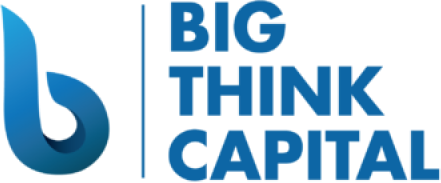Understanding Inflation: How Rising Rates Influence Your Small Business Loan Options in 2025
Estimated reading time: 6 minutes
- Increased cost of borrowing due to rising interest rates.
- Potential decrease in loan availability as lenders tighten criteria.
- Shifts in loan preference towards flexible financing options.
Table of Contents
- The Landscape of Inflation in 2025
- How Rising Interest Rates Impact Small Business Loans
- Current Lending Options for Small Businesses in 2025
- The Implications of Inflation on Business Financing Decisions
- Conclusion
The Landscape of Inflation in 2025
Inflation has been a prominent topic in economic discussions, with many expert analysts projecting it to remain elevated in 2025. According to the Bureau of Labor Statistics (BLS), consumer prices rose by 7% in 2023 and have continued an upward trend into the new year. This rate of inflation translates directly into changes in the Federal Reserve’s monetary policy.
As of February 2025, the Federal Reserve has raised interest rates multiple times to curb inflation, which typically results in higher loan costs for consumers and businesses alike. The Federal Reserve’s response aims to stabilize the economy, but it also creates complications for small business financing.
How Rising Interest Rates Impact Small Business Loans
- Increased Cost of Borrowing
As the Federal Reserve raises rates, lenders pass these costs onto consumers. For small businesses, this means that loans are more expensive to obtain than they were before. Higher interest rates can significantly increase monthly repayments, impacting cash flow management. - Decreased Loan Availability
In an environment of high inflation and rising rates, lenders may tighten their lending criteria. This means that businesses with lower credit scores or those that do not meet specific financial benchmarks may find it more challenging to secure financing. - Shifts in Loan Types
Certain types of loans may become less attractive due to increased rates. For example, traditional fixed-rate loans could see decreased demand as businesses look for more flexible options that offer lower immediate costs, such as lines of credit or other alternative financing solutions.
Current Lending Options for Small Businesses in 2025
Understanding the various financing options available and their suitability can help business owners make informed decisions.
- SBA Loans
Small Business Administration (SBA) loans remain a popular choice, particularly for companies looking for long-term financing solutions. These loans often come with lower interest rates compared to private loans, making them an appealing option. However, the application process can be lengthy, and businesses must meet strict eligibility criteria. - Working Capital Advances
As businesses face immediate cash flow challenges, working capital advances have become increasingly attractive. These financing options provide quick access to funds. However, business owners should be cautious, as the costs can be high, particularly if repayments are linked to daily credit card sales. - Equipment Financing
For businesses that require significant equipment investments, financing specifically designed for equipment purchase can be beneficial. Typically, the interest rates are fixed, and the equipment itself often serves as collateral, reducing risk for lenders. - Merchant Cash Advances (MCA)
While often criticized due to high costs, MCAs offer immediate access to funds based on future credit card sales. Given the current economic climate, small businesses may be forced to consider this option, though it’s imperative to evaluate the costs carefully. - Lines of Credit
A line of credit can provide businesses with flexibility to draw on funds as needed. As a safety net, this financing allows businesses to manage expenses without committing to a fixed loan amount. Given rising rates, lines of credit may offer a more manageable solution compared to traditional loans.
The Implications of Inflation on Business Financing Decisions
In this shifting landscape, business owners must be strategic about borrowing and funding. Here are three practical takeaways:
- Review Your Financial Position Regularly
Regular assessments of your financial status can equip your business to respond proactively to financing needs. Understanding your cash flow, credit score, and overall debt obligations will inform better decision-making regarding which financing options are most suitable. - Consider Multiple Loan Options
With the lending environment constantly changing, it’s essential to explore various options. Don’t rely solely on one type of financing. Each loan type has unique advantages and disadvantages, and leveraging multiple sources could provide the most cost-effective solutions for your specific needs. - Stay Informed About Rate Changes
Monitoring economic indicators like inflation rates and Federal Reserve announcements can help you anticipate changes in lending conditions. Being informed allows you to make timely financing decisions, such as locking in lower rates before anticipated increases.
Conclusion
As inflation continues to shape the economy in 2025, its effects on small business financing are profound. By understanding the intricacies of how rising rates influence financing options, business owners can take proactive steps to secure the funding they need.
For businesses looking to navigate this complex landscape, Big Think Capital offers a range of financing solutions tailored to your specific needs. Whether you are considering an SBA loan, evaluating equipment financing, or exploring working capital advances, our team of funding experts is here to guide you every step of the way.
If you want to learn more about the best funding options for your business, visit us or speak with one of our experienced financing advisors today. Your success is our priority, and we are dedicated to helping you achieve your business goals in 2025 and beyond.
FAQ Section
- How does inflation affect business loans?
- Inflation can lead to rising interest rates, which increase the cost of borrowing for businesses. This may result in higher loan repayments and stricter lending criteria.
- What types of loans are available for small businesses in 2025?
- In 2025, options include SBA loans, working capital advances, equipment financing, merchant cash advances, and lines of credit.
- What should business owners consider when borrowing?
- Business owners should regularly review their financial position, explore multiple loan options, and stay informed about economic changes that may impact lending conditions.






